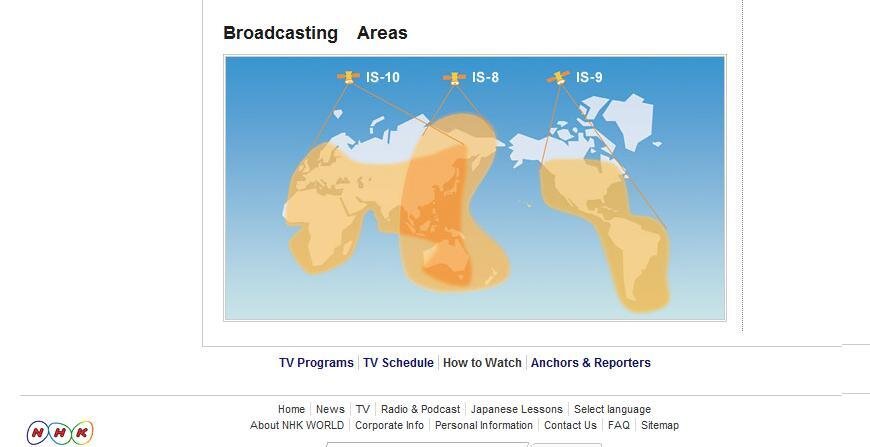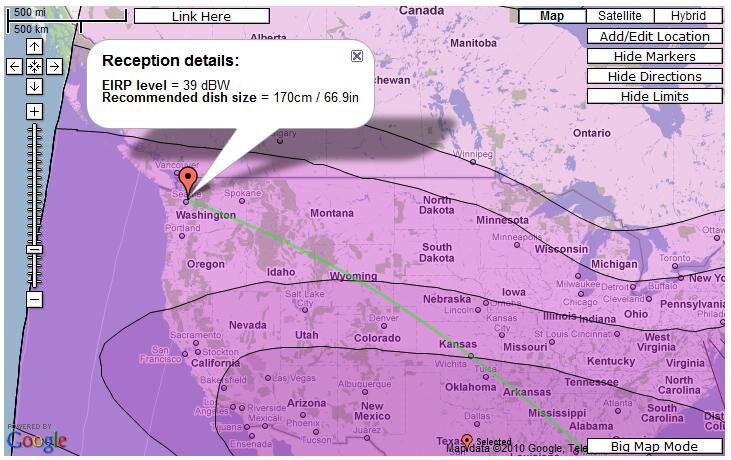For receiving FTA satellite signals, can I use any 18inch Dish Network or Direct TV dish that I can get from my local Radio Shack store? Or are those designed with proprietary circuits in the LNB which are meant to ONLY pick up signals from those companies (Dish Network or Direct TV)?
What kind of dish would I need for FTA reception?
- Thread starter Videogamer555
- Start date
- Latest activity Latest activity:
- Replies 9
- Views 4K
You are using an out of date browser. It may not display this or other websites correctly.
You should upgrade or use an alternative browser.
You should upgrade or use an alternative browser.
- Status
- Please reply by conversation.
two problems with using the 18inch dish.
First the lnbf is circular for FTA you will need
a linear lnbf. Second the dish needs to be
36" or bigger. You might be able to pick up
some channel's, but to get them all look for
a bigger dish. A primestar dish work's well.
Hope this is the info you were needing.
First the lnbf is circular for FTA you will need
a linear lnbf. Second the dish needs to be
36" or bigger. You might be able to pick up
some channel's, but to get them all look for
a bigger dish. A primestar dish work's well.
Hope this is the info you were needing.
two problems with using the 18inch dish.
First the lnbf is circular for FTA you will need
a linear lnbf. Second the dish needs to be
36" or bigger. You might be able to pick up
some channel's, but to get them all look for
a bigger dish. A primestar dish work's well.
Hope this is the info you were needing.
Thanks, but why does it have to be SOOOO big? The frequency range is the same as that used by pay-to-receive satellite services. And I saw a couple 33" dishes on Ebay. Is that too small? and lastly, is it possible to remove the existing LNB from an 18inch dish, and mount a linear one in its place? Also do the voltages used by the LNBs that come with an 18inch dish match the voltages used by a linear polarized LNB?
Also if it's linear polarized, is it vertical polarized? Or horizontal polarized? In other words, when using a linear polarized LNB will i have to rotate it by 90deg or not? And how will I know?
The pay satellite services transmit at a higher power level so that you can use a smaller dish.
33" isn't too small, I'm using a 30" dish. Some satellites are stronger than others though, and they aren't all uniform across the country either. Did you have a specific satellite you were thinking of trying?
You can replace the LNB on an 18" dish, but you might have to build your own mount for it. There's only one linear LNB made that slips into the end of an 18" DirecTV dish tube. But this won't work for all transponders on all satellites in all areas. In other words, it's probably for people who already know what they're doing.
The LNB receives both horizontal and vertical polarization, selected by the supply voltage. Alternating transponders on a given satellite are opposite polarities, and corresponding frequencies on adjacent satellites are (supposedly) opposite polarities, in order to reduce interference. (This is exactly the same with pay satellites, except the polarization is left-hand and right-hand circular.)
33" isn't too small, I'm using a 30" dish. Some satellites are stronger than others though, and they aren't all uniform across the country either. Did you have a specific satellite you were thinking of trying?
You can replace the LNB on an 18" dish, but you might have to build your own mount for it. There's only one linear LNB made that slips into the end of an 18" DirecTV dish tube. But this won't work for all transponders on all satellites in all areas. In other words, it's probably for people who already know what they're doing.
The LNB receives both horizontal and vertical polarization, selected by the supply voltage. Alternating transponders on a given satellite are opposite polarities, and corresponding frequencies on adjacent satellites are (supposedly) opposite polarities, in order to reduce interference. (This is exactly the same with pay satellites, except the polarization is left-hand and right-hand circular.)
The pay satellite services transmit at a higher power level so that you can use a smaller dish.
33" isn't too small, I'm using a 30" dish. Some satellites are stronger than others though, and they aren't all uniform across the country either. Did you have a specific satellite you were thinking of trying?
You can replace the LNB on an 18" dish, but you might have to build your own mount for it. There's only one linear LNB made that slips into the end of an 18" DirecTV dish tube. But this won't work for all transponders on all satellites in all areas. In other words, it's probably for people who already know what they're doing.
The LNB receives both horizontal and vertical polarization, selected by the supply voltage. Alternating transponders on a given satellite are opposite polarities, and corresponding frequencies on adjacent satellites are (supposedly) opposite polarities, in order to reduce interference. (This is exactly the same with pay satellites, except the polarization is left-hand and right-hand circular.)
I'm hoping to get NHK, the main Japanese TV station, which according to what I've read, has a broadcast on FTA a satellite which is receivable in the US.
There's also another Japanese channel, called Channel J.
Last edited:
This thread is old, but according to our satellite list, it's still accurate.
I can't vouch for the size dish you'll need, though.
Can you watch Japanese tv ?
SatelliteGuys.US - 58.0°W Intelsat 9 C
SatelliteGuys.US - 127.0°W Galaxy 13 C
I can't vouch for the size dish you'll need, though.
Can you watch Japanese tv ?
SatelliteGuys.US - 58.0°W Intelsat 9 C
SatelliteGuys.US - 127.0°W Galaxy 13 C
NHK is a C-Band service. For C-Band, you would need a 6 foot or larger dish for reliable reception.
For linear Ku, you need a larger dish for two reasons.
First is power. FSS (technical name) Ku satellites are lower power than DBS satellites.
Second is spacing. FSS Ku satellites are as low as 2 degrees apart. The larger the dish, the smaller the spacing they can see and reject adjacent satellites.
A larger dish makes multi-LNBF use a bit easier to accomplish results.
First is power. FSS (technical name) Ku satellites are lower power than DBS satellites.
Second is spacing. FSS Ku satellites are as low as 2 degrees apart. The larger the dish, the smaller the spacing they can see and reject adjacent satellites.
A larger dish makes multi-LNBF use a bit easier to accomplish results.
NHK is actually pretty easy to pick up and is stable due to the 1/2 FEC
IIRC ikki was able to get it on a 4 footer. I know my 6 footer here in MN gets NNK very strong quality
IIRC ikki was able to get it on a 4 footer. I know my 6 footer here in MN gets NNK very strong quality
Videogammer555-
I hope this helps as to the dish size required for your location to receive NHK World. I am attaching a photo of the quality level readings for NHK World that I receive in Nebraska using a Pansat 2700A stb. I am using a 1.2 meter offset dish and a DMX241 LNBF. This channel is only availible on Intelsat 9 Cband for the United States. I have researched what the NHK provider recommends for equipment to receive thier broadcast and the satellite transponder information (see attached).
I am also including the EIRP levels of Intesat 9 footprints for both Seattle WA and North Bend NE. I receive this channel with excellent reception, and believe that although a 1.2 meter dish would be the minimum for use, you should be able to get NHK with this dish. I can receive a few Cband channels from satellites with a 39dbw footprint.
I hope this helps as to the dish size required for your location to receive NHK World. I am attaching a photo of the quality level readings for NHK World that I receive in Nebraska using a Pansat 2700A stb. I am using a 1.2 meter offset dish and a DMX241 LNBF. This channel is only availible on Intelsat 9 Cband for the United States. I have researched what the NHK provider recommends for equipment to receive thier broadcast and the satellite transponder information (see attached).
I am also including the EIRP levels of Intesat 9 footprints for both Seattle WA and North Bend NE. I receive this channel with excellent reception, and believe that although a 1.2 meter dish would be the minimum for use, you should be able to get NHK with this dish. I can receive a few Cband channels from satellites with a 39dbw footprint.
Attachments
-
 NHK coverage area.jpg28.9 KB · Views: 255
NHK coverage area.jpg28.9 KB · Views: 255 -
 NHK satellite information.jpg46.9 KB · Views: 274
NHK satellite information.jpg46.9 KB · Views: 274 -
 NHK recommended equipment to receive broadcast.jpg35.5 KB · Views: 202
NHK recommended equipment to receive broadcast.jpg35.5 KB · Views: 202 -
 Intesat 9 EIRP level for North Bend NE.jpg67.5 KB · Views: 303
Intesat 9 EIRP level for North Bend NE.jpg67.5 KB · Views: 303 -
 Intesat 9 EIRP level for Seattle WA.jpg67.9 KB · Views: 292
Intesat 9 EIRP level for Seattle WA.jpg67.9 KB · Views: 292 -
 023.JPG389.8 KB · Views: 295
023.JPG389.8 KB · Views: 295
- Status
- Please reply by conversation.
Similar threads
- Replies
- 27
- Views
- 2K
- Replies
- 8
- Views
- 979
- Replies
- 3
- Views
- 349
- Replies
- 12
- Views
- 1K
- Replies
- 2
- Views
- 426

